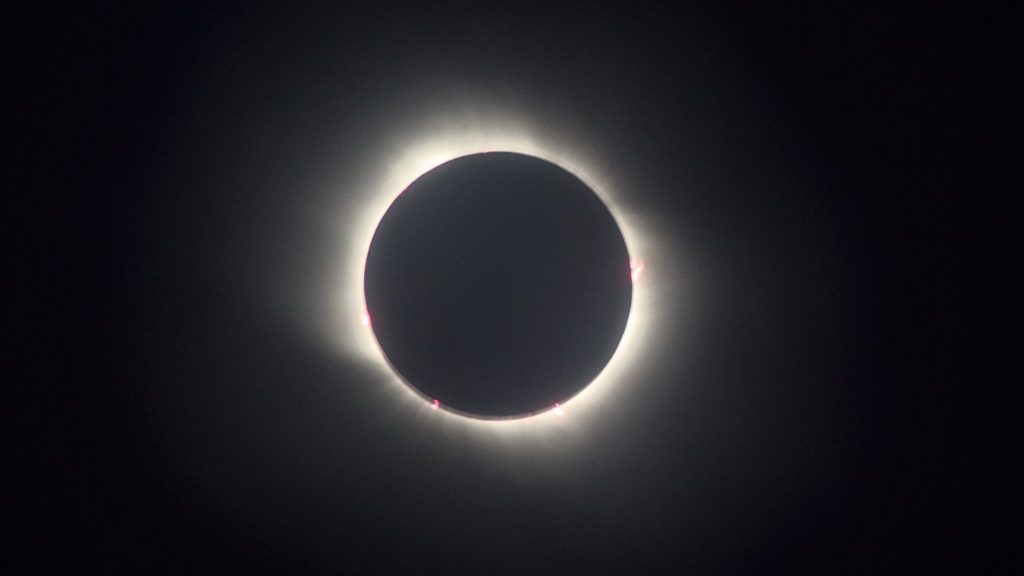This article was first published on The Conversation.
On April 8, 2024, many people in the U.S. will get the rare opportunity to see a total solar eclipse. Cities like Austin, Texas; Buffalo, New York; and Cleveland, Ohio, will have a direct view of this special event that lasts for a few hours.
While Many astronomical events and meteor showers can be seen from anywhere on Earth, but eclipses are different., such as comets You have to travel to the path of totality to see the complete eclipse. Only specific places get to see the full eclipse, and that's because of the scale.
Because of the relatively small size of the Moon, and its shadow, eclipses are truly rare opportunities. On average, total solar eclipses are visible somewhere on Earth once every few years. But from any one location on Earth, it is roughly 375 years between solar eclipses.
I’m an astronomer,but I have never seen a total solar eclipse, so I plan to drive to Erie, Pennsylvania, in the path of totality, for this one. This is one of the few chances I have to see a total eclipse without making a much more expensive trip to some remote place.Many people have asked me why nearby eclipses are so rare, and the answer is related to the size of the Moon and its distance from the Sun.
Size and scale
You can witness a solar eclipse when the Moon moves in front of the Sun, blocking some or all of the Sun. For people on Earth to see an eclipse, the Moon must align exactly with the Sun in the observer's line of sight. However, not everyone's view of the Sun will be blocked by the Moon on the day of an eclipse, so only some observers will see it.
Solar eclipses happen due to a numerical coincidence where the Sun is about 400 times larger than the Moon and also 400 times farther from the Earth.
So, although the Moon is much smaller than the Sun,it is just close enough to Earth to appear the same size as the Sun when seen from Earth.
For instance, your pinky finger is much, much smaller than the Sun, but if you hold it up at arm’s length, it appears to your eye to be large enough to block out the Sun. The Moon can do the same thing – it can block out the Sun if it’s lined up perfectly with the Sun from your point of view.
Path of totality
When the Earth, Moon, and Sun align perfectly, the Moon casts a shadow onto the Earth. Since the Moon is round, its shadow is round as it lands on Earth. Only people in the area on Earth where the shadow lands at a given moment will see the eclipse.
The Moon continues to orbit around the Earth, so during the eclipse, the Moon’s shadow moves over the Earth's surface. Its shadow ends up looking like a thick line that can cover hundreds of miles in length. Astronomers call that line the path of totality.
From any given location along the path of totality, an observer can see the completely eclipsed Sun for a few minutes. Then, the shadow moves away, and the Sun gradually becomes more and more visible.
A tilted orbit
Solar eclipses don’t occur every time the Moon comes between Earth and the Sun. If that were true, there would be a solar eclipse every month.
If you could hover above the Earth’s North Pole and observe the Moon’s orbit from above, you would see the Moon line up with the Sun once every time it circles around the Earth, which is about once per month. From this high point of view, it seems like the Moon’s shadow should hit Earth every orbit.
However, if you could change your perspective to view the Moon’s orbit from the orbital plane, you would see that the Moon’s orbit is tilted by about 5 degrees compared to Earth’s orbit around the Sun. This tilt means that sometimes the Moon is too high and its shadow passes above the Earth, and sometimes the Moon is too low and its shadow passes below the Earth. An eclipse occurs only when the Moon is positioned just right and its shadow lands on the Earth.
As time goes on, the Earth and the Moon keep spinning, and eventually the Moon aligns with Earth’s orbit around the Sun at the same time the Moon passes between the Sun and the Earth.
While only certain cities are in the path of totality for this April’s eclipse, the entire U.S. is still close enough to this path that observers outside of the path of totality will see a partial eclipse. In those locations, the Moon will seem to pass in front of part of the Sun, leaving a crescent shape of the Sun still visible at the moment of maximum eclipse.









